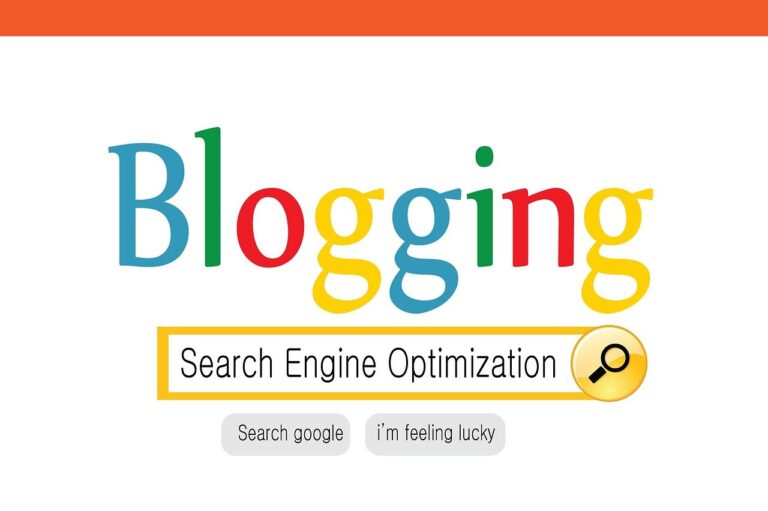Understanding Holistic Healing

Holistic healing approaches the body, mind, and spirit as interconnected aspects of human health. This comprehensive view emphasizes treating the whole person rather than just symptoms.
The Principles of Holistic Healing
Holistic healing is based on the belief that optimal health requires balance in all areas of life. You are seen as a whole person, not just a collection of symptoms. Key principles include:
- Treating the root cause, not just symptoms
- Empowering you to take an active role in your health
- Utilizing natural remedies and therapies when possible
- Recognizing the mind-body-spirit connection
Practitioners work to identify underlying imbalances that may contribute to health issues. They often use a combination of traditional and complementary approaches to support your body’s innate healing abilities.
Common Techniques and Therapies
Holistic healing encompasses a wide range of practices. Some popular techniques include:
- Acupuncture and Traditional Chinese Medicine
- Herbal medicine and nutrition therapy
- Massage and bodywork
- Meditation and mindfulness practices
- Energy healing modalities like Reiki
Many of these therapies aim to reduce stress, boost immunity, and promote relaxation. You might also encounter practices like yoga, aromatherapy, or hypnotherapy as part of a holistic treatment plan.
The Growing Popularity of Holistic Approaches
Holistic healing has gained significant traction in recent years. Factors contributing to its rise include:
- Increased interest in preventive care and wellness
- Dissatisfaction with conventional medicine’s focus on symptom management
- Growing evidence supporting the efficacy of certain complementary therapies
You may find holistic approaches integrated into mainstream healthcare settings more frequently. Many hospitals now offer integrative medicine programs that combine conventional treatments with holistic therapies. This shift reflects a broader recognition of the importance of addressing physical, emotional, and spiritual aspects of health in patient care.
Case Study 1: Overcoming Chronic Pain with Acupuncture and Herbal Remedies
This case study examines how a patient with chronic lower back pain found relief through a combination of acupuncture treatments and herbal remedies. The integrated approach yielded significant improvements in pain levels and quality of life.
Background and Patient Profile
Sarah, a 42-year-old office worker, had been suffering from chronic lower back pain for over five years. Her pain stemmed from a workplace injury and was exacerbated by long hours of sitting.
Conventional treatments, including physical therapy and pain medications, provided only temporary relief. Sarah’s pain significantly impacted her daily activities and sleep quality.
She sought alternative treatments after growing frustrated with the side effects of pain medications and their diminishing effectiveness over time.
Treatment Plan and Implementation
Sarah’s practitioner developed a holistic treatment plan combining acupuncture and herbal remedies. The plan included:
- Twice-weekly acupuncture sessions for 8 weeks
- Daily herbal tea blend for inflammation reduction
- Gentle exercises to improve flexibility and strength
- Dietary modifications to support overall healing
Acupuncture sessions focused on key points along Sarah’s back, legs, and feet. The practitioner used a combination of traditional and electroacupuncture techniques.
The herbal tea blend contained turmeric, ginger, and white willow bark, known for their anti-inflammatory properties.
Results and Patient Feedback
After completing the 8-week treatment plan, Sarah reported:
- 70% reduction in pain intensity
- Improved sleep quality and duration
- Increased mobility and flexibility
- Reduced reliance on pain medications
Sarah noted that improvements became noticeable after the third week of treatment. By the end of the program, she could engage in light exercise without pain flare-ups.
The combination of acupuncture and herbal remedies proved more effective for Sarah than either treatment alone. She continued with monthly maintenance sessions to sustain the benefits.
Key Takeaways for Practitioners
-
Integrate multiple modalities: Combining acupuncture with herbal remedies can enhance treatment efficacy for chronic pain.
-
Personalize treatment plans: Tailor approaches to each patient’s specific needs and pain patterns.
-
Focus on long-term healing: Emphasize sustainable pain management strategies over quick fixes.
-
Educate patients: Help them understand the holistic nature of treatment and the importance of their active participation.
-
Monitor progress closely: Regular check-ins allow for timely adjustments to the treatment plan.
Case Study 2: Managing Anxiety and Depression through Mindfulness and Yoga
This case study explores how mindfulness practices and yoga effectively treated a patient’s anxiety and depression. The holistic approach led to significant improvements in symptoms and overall well-being.
Background and Patient Profile
Sarah, a 32-year-old marketing executive, sought treatment for chronic anxiety and depression. She reported experiencing:
- Persistent worry and rumination
- Difficulty concentrating at work
- Frequent panic attacks
- Low energy and motivation
- Disrupted sleep patterns
Sarah had tried traditional medication and therapy with limited success. She was open to exploring alternative treatments to manage her symptoms more effectively.
Treatment Plan and Implementation
The treatment plan focused on integrating mindfulness-based stress reduction (MBSR) and yoga practices. Key components included:
- Weekly 90-minute MBSR group sessions for 8 weeks
- Daily 20-minute guided mindfulness meditations
- Bi-weekly 60-minute yoga classes
- Mindful breathing exercises for acute anxiety
Sarah committed to practicing mindfulness for 30 minutes daily and attending all scheduled sessions. She kept a journal to track her progress and experiences throughout the treatment.
Results and Patient Feedback
After completing the 8-week program, Sarah reported significant improvements:
- 60% reduction in anxiety symptoms
- Decreased frequency and intensity of panic attacks
- Improved sleep quality and duration
- Enhanced focus and productivity at work
- Greater overall sense of calm and well-being
Sarah found the mindfulness practices particularly helpful in managing rumination and worry. The yoga sessions improved her body awareness and provided a physical outlet for stress.
Key Takeaways for Practitioners
-
Combine mindfulness and yoga: Integrating both practices can address mental and physical aspects of anxiety and depression.
-
Customize treatment plans: Tailor the program to fit the patient’s schedule and preferences for better adherence.
-
Encourage daily practice: Consistent, shorter sessions are more effective than sporadic, longer ones.
-
Track progress: Use journals or apps to monitor symptoms and improvements, adjusting the plan as needed.
-
Teach long-term skills: Equip patients with tools they can use independently after the program ends.
Case Study 3: Healing Digestive Issues with Nutrition and Lifestyle Changes
This case study demonstrates the power of holistic approaches in addressing chronic digestive problems. Through targeted dietary changes, stress management techniques, and personalized supplementation, the patient experienced significant improvements in gut health and overall well-being.
Background and Patient Profile
Sarah, a 35-year-old marketing executive, sought help for persistent digestive issues. She reported frequent bloating, abdominal pain, and irregular bowel movements. Sarah’s symptoms had worsened over the past two years, impacting her work performance and quality of life.
Her diet consisted mainly of processed foods and takeout meals due to a busy schedule. Sarah also mentioned high stress levels and poor sleep quality. Previous conventional treatments had provided only temporary relief.
Treatment Plan and Implementation
The holistic treatment plan focused on three key areas:
-
Nutrition: Transition to a whole-foods-based diet, emphasizing fresh vegetables, fruits, lean proteins, and whole grains. Incorporate anti-inflammatory foods like turmeric and ginger.
-
Lifestyle: Implement stress-reduction techniques such as daily meditation and yoga. Establish a consistent sleep schedule.
-
Supplementation: Introduce probiotics and digestive enzymes to support gut health.
Sarah gradually adopted these changes over 8 weeks, with weekly check-ins to address challenges and adjust the plan as needed.
Results and Patient Feedback
After 12 weeks, Sarah reported:
- 80% reduction in bloating and abdominal pain
- More regular bowel movements
- Improved energy levels and mental clarity
- Better sleep quality and stress management
Sarah expressed satisfaction with the holistic approach, noting it felt more sustainable than previous treatments. She appreciated learning about the connection between diet, stress, and gut health.
Key Takeaways for Practitioners
-
Personalization is crucial: Tailor treatment plans to each patient’s lifestyle and preferences.
-
Education empowers patients: Teach the importance of gut health and its connection to overall well-being.
-
Gradual implementation yields better results: Introduce changes slowly to improve adherence and long-term success.
-
Address multiple factors: Combine nutritional interventions with lifestyle changes for comprehensive healing.
-
Regular follow-ups are essential: Monitor progress and adjust treatment plans as needed.
Case Study 4: Addressing Autoimmune Disorders with Integrative Medicine

This case study explores an integrative approach to treating autoimmune disorders, combining conventional and complementary therapies. The patient’s journey highlights the potential of personalized treatment plans in managing complex conditions.
Background and Patient Profile
A 42-year-old woman presented with symptoms of fatigue, joint pain, and recurring skin rashes. She had been diagnosed with systemic lupus erythematosus (SLE) two years prior. Conventional treatments provided limited relief, and she sought alternative options.
The patient’s medical history included:
- Frequent infections
- Digestive issues
- Anxiety and depression
Her goals were to reduce inflammation, improve energy levels, and enhance overall quality of life.
Treatment Plan and Implementation
The integrative medicine practitioner developed a comprehensive treatment plan addressing multiple aspects of the patient’s health:
- Diet modifications: Anti-inflammatory diet rich in omega-3 fatty acids and antioxidants
- Herbal supplements: Turmeric and boswellia for inflammation reduction
- Mind-body techniques: Daily meditation and gentle yoga practice
- Acupuncture: Bi-weekly sessions for pain management
- Conventional medication: Carefully monitored and adjusted as needed
The patient was educated on stress management techniques and the importance of quality sleep.
Results and Patient Feedback
After six months of integrative treatment, the patient reported significant improvements:
- 60% reduction in joint pain
- Increased energy levels
- Improved skin condition
- Better sleep quality
- Reduced anxiety
Blood tests showed decreased inflammation markers. The patient expressed high satisfaction with the holistic approach, noting improved overall well-being.
Lessons Learned from Holistic Healing Case Studies

Holistic healing case studies reveal valuable insights into effective practices, common challenges, and strategies for successful implementation. These lessons provide a foundation for improving holistic healing approaches.
Identifying Common Success Factors
Holistic nurses’ experiences highlight key factors contributing to successful healing outcomes. Patient engagement and active participation in their own healing process are crucial.
You’ll find that establishing trust and open communication between practitioners and patients leads to better results.
Integrating multiple healing modalities, such as traditional healing practices alongside modern techniques, often yields more comprehensive outcomes.
Personalized treatment plans tailored to individual needs and preferences show higher success rates.
Practitioners who maintain a holistic perspective, addressing physical, emotional, and spiritual aspects of health, tend to achieve more sustainable healing results.
Challenges and Limitations
Despite its potential benefits, holistic healing faces several obstacles. Limited scientific evidence for some alternative therapies can make it difficult to gain widespread acceptance in conventional medical settings.
Varying levels of practitioner training and certification standards pose challenges in ensuring consistent quality of care. You may encounter skepticism from patients or other healthcare professionals unfamiliar with holistic approaches.
Insurance coverage limitations for many holistic treatments can create financial barriers for patients seeking these therapies. Integrating holistic practices into existing healthcare systems often requires overcoming institutional resistance and bureaucratic hurdles.
Strategies for Effective Implementation
To successfully implement holistic healing approaches, focus on evidence-based practices supported by research. Develop comprehensive training programs for practitioners to ensure consistent, high-quality care delivery.
Collaborate with conventional healthcare providers to create integrated treatment plans. This approach can help bridge the gap between traditional and holistic medicine.
Educate patients about the benefits and limitations of holistic therapies to set realistic expectations. Implement robust data collection and analysis systems to track outcomes and demonstrate efficacy.
Consider offering sliding scale fees or community outreach programs to make holistic treatments more accessible. Build a strong network of practitioners from various disciplines to provide truly comprehensive care.
Evidence-Based Insights on Holistic Therapies

Scientific studies have provided valuable insights into the effectiveness of holistic approaches. Comparative analyses with conventional treatments offer a balanced perspective.
Ongoing research continues to expand our understanding of holistic therapies.
Review of Scientific Studies Supporting Holistic Approaches
Holistic assessment-based interventions have shown promising results for adults with multiple long-term conditions. These interventions consider the whole person, addressing physical, mental, and social aspects of health.
Studies indicate that certain holistic therapies can complement conventional treatments. For example, mindfulness meditation has been found to reduce stress and improve overall well-being in numerous clinical trials.
Acupuncture, a traditional Chinese medicine practice, has demonstrated effectiveness in pain management for various conditions. Research suggests it may stimulate the release of endorphins and influence neurotransmitter levels.
Comparative Analysis with Conventional Treatments
When comparing holistic approaches to conventional treatments, it’s essential to consider both efficacy and patient experience. Some holistic therapies have shown comparable outcomes to standard medical interventions for specific conditions.
For chronic pain management, a combination of holistic techniques like yoga and conventional pain medications often yields better results than medication alone. This integrated approach can lead to reduced drug dependence and fewer side effects.
In mental health, cognitive-behavioral therapy combined with mindfulness practices has proven effective for treating anxiety and depression. This holistic strategy often results in longer-lasting improvements compared to medication-only approaches.
Recommendations for Further Research
To strengthen the evidence base for holistic therapies, more rigorous clinical trials are needed. You should look for studies with larger sample sizes, randomized controlled designs, and long-term follow-ups.
Research on the mechanisms of action behind holistic therapies is crucial. Understanding how these approaches affect the body and mind can lead to more targeted and effective treatments.
Investigating the cost-effectiveness of holistic interventions compared to conventional treatments is another important area. This research can help inform healthcare policy and insurance coverage decisions.
Conclusion

Holistic healing offers powerful paths to wellness. The case studies examined demonstrate its potential to transform lives. You’ve seen how integrating mind, body, and spirit can lead to profound healing experiences.
Key takeaways include the importance of personalized approaches. What works for one individual may not work for another. Flexibility and openness to different modalities are crucial.
Accessible and affordable options play a vital role in expanding holistic care. Removing barriers allows more people to benefit from these practices.
The integration of traditional healing methods with modern approaches shows promise. Respecting cultural wisdom while embracing new discoveries creates a more comprehensive healing environment.
Continued research and documentation of holistic healing outcomes are essential. Your stories and experiences contribute to the growing body of evidence supporting these practices.
Remember, holistic healing is a journey, not a destination. Embrace the process, be patient with yourself, and remain open to new possibilities on your path to wellness.
Frequently Asked Questions

Holistic healing encompasses a wide range of approaches and outcomes. Many individuals report remarkable recoveries and transformative experiences through alternative and complementary therapies. Medical professionals continue to study these cases to better understand the underlying mechanisms.
What are some well-documented spontaneous healing cases?
Spontaneous healing cases have been reported across various conditions. One notable example involves a woman with stage 4 lung cancer who experienced complete remission after adopting a holistic lifestyle approach. Another case documents a man’s recovery from paralysis through intensive meditation and visualization techniques.
These cases often involve a combination of conventional and alternative therapies. While rare, they provide valuable insights into the potential of holistic healing approaches.
Can you provide examples of so-called miracle cures and their validity?
So-called miracle cures should be approached with caution. One often-cited example is the use of vitamin C megadoses for cancer treatment. While some patients report positive outcomes, scientific evidence remains inconclusive.
Another example is the claimed healing powers of certain sacred sites. While many visitors report improvements in their conditions, it’s challenging to separate the placebo effect from genuine physiological changes.
How do brain-related holistic healing case studies demonstrate success and what can be learned from them?
Brain-related holistic healing case studies often focus on neuroplasticity. You may find examples of stroke patients regaining function through mindfulness practices and visualization techniques. These cases highlight the brain’s ability to adapt and form new neural connections.
Other studies examine the effects of meditation on anxiety and depression. Participants often report reduced symptoms and improved quality of life, demonstrating the potential of mind-body interventions.
Are there testimonies of holistic healing methods leading to cancer remission?
Some cancer patients have reported remission after incorporating holistic healing methods. One case involves a woman with breast cancer who combined conventional treatments with acupuncture, dietary changes, and stress reduction techniques.
Another testimony describes a man’s recovery from advanced melanoma using a combination of immunotherapy and mind-body practices. While these cases are encouraging, it’s important to note that results vary widely among individuals.
What are some multicultural perspectives on holistic healing success?
Multicultural perspectives on holistic healing success often draw from traditional medicine systems. In Traditional Chinese Medicine, case studies frequently highlight the effectiveness of acupuncture and herbal remedies for chronic pain conditions.
Ayurvedic medicine from India provides examples of successful treatments for digestive disorders using personalized dietary and lifestyle recommendations. Native American healing practices offer testimonies of emotional and spiritual healing through ceremonial rituals.
How do medical professionals explain cases that are considered medical miracles?
Medical professionals often attribute cases considered “miracles” to a combination of factors. These may include misdiagnosis, spontaneous remission, or the body’s natural healing processes.
Some experts point to the power of the mind-body connection in influencing health outcomes. Others emphasize the role of comprehensive care approaches that address physical, emotional, and spiritual aspects of health.
While unexplained recoveries occur, medical professionals caution against relying solely on anecdotal evidence when making treatment decisions.






